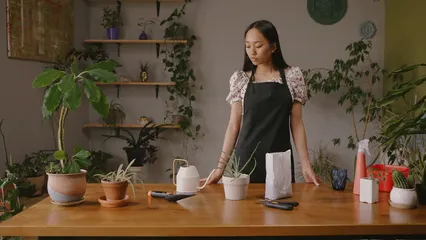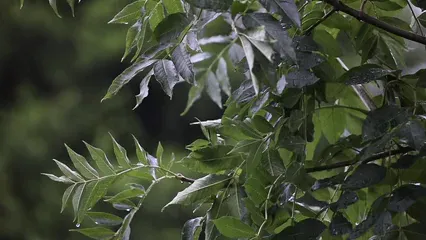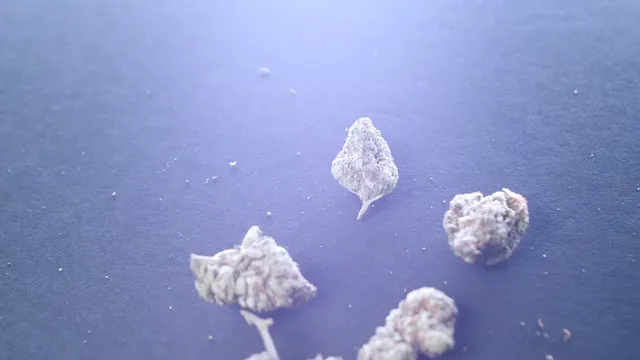

Best Practices for Maintaining Cannabis Health in Humid Weather
Introduction
Humidity can be a tricky foe for cannabis growers. High moisture levels create challenges in maintaining plant health. Controlling humidity is essential to prevent mold, mildew, and other issues that can devastate crops. This article aims to provide practical tips for both growers and consumers to keep cannabis healthy during humid conditions.
Summary and Overview
Humidity plays a crucial role in cannabis health. Excess moisture can lead to mold and nutrient lockout, significantly affecting yield and quality. Monitoring humidity levels throughout all growth stages is vital. In this article, we will discuss strategies to manage humidity effectively, ensuring healthy, robust plants.
Understanding Humidity and Its Effects on Cannabis
What is Humidity?
Humidity refers to the amount of water vapor in the air. It’s measured in two ways: relative humidity (RH) and absolute humidity. Relative humidity compares the current moisture in the air to the maximum it can hold at a specific temperature. Absolute humidity measures the actual amount of water vapor in the air, regardless of temperature. Vapor Pressure Deficit (VPD) is another critical concept. It indicates how much moisture the air can still absorb.
Effects of High Humidity on Cannabis
High humidity poses several risks for cannabis plants. It creates an environment conducive to mold, mildew, and bud rot. These issues can lead to significant yield loss. Additionally, excess moisture can hinder nutrient absorption, affecting overall plant health. Therefore, it’s crucial to keep humidity levels in check, especially during flowering.

Best Practices for Managing Humidity
Monitoring Humidity Levels
Use of Hygrometers
Accurate humidity monitoring is essential for cannabis health. Hygrometers measure moisture levels in the air to help you stay informed. You can choose from two main types: analog and digital. Digital hygrometers are often easier to read and provide real-time data. Some models even connect to smartphone apps for convenient monitoring. Regular monitoring can prevent issues like mold and nutrient lockout, ensuring your plants thrive. Consider a Digital Indoor Thermometer and Humidity Monitor for precise readings.
For more insights, check out our article on best practices for maintaining cannabis health in humid weather.
Frequency of Checks
How often should you check humidity levels? During the seedling stage, daily checks are essential for optimal growth. In the vegetative stage, monitoring every few days is sufficient. As your plants enter the flowering stage, maintain frequent checks, ideally every day. This ensures you catch any fluctuations early, allowing you to adjust conditions promptly. Staying proactive in monitoring will lead to healthier plants and better yields.
Controlling Humidity
Dehumidification Solutions
Dehumidifiers are vital for managing humidity levels in cannabis cultivation. There are two main types: desiccant and refrigerant. Desiccant dehumidifiers absorb moisture from the air, while refrigerant units cool air to condense moisture. Choose based on your grow space size and humidity levels. Integrating HVAC systems can also help maintain optimal humidity. These systems regulate temperature and humidity together, creating a balanced environment. Properly managing humidity prevents mold and enhances plant health. Consider the VIVOSUN 70 Pint Dehumidifier for effective moisture removal.
Ventilation Strategies
Good airflow is crucial for maintaining humidity levels. Effective ventilation helps prevent stagnant air, which can trap moisture. Install fans to promote air movement within your grow space. Use exhaust fans to remove humid air and bring in fresh, drier air. Additionally, consider using passive vents to enhance natural airflow. Regularly check for any blockages and ensure your ventilation system is functioning optimally. Consistent airflow will help create a healthy environment for your cannabis plants. A great choice is the Lasko 20″ High Velocity Air Circulator Fan.
Adjusting Watering Practices
Watering Techniques
Humidity plays a significant role in how often you should water your cannabis plants. High humidity levels reduce the need for frequent watering, as the plants retain moisture from the air. Monitor soil moisture before watering to avoid overwatering. Conversely, if humidity is low, you may need to adjust your schedule and water more often. Pay attention to your plants’ appearance. Droopy leaves can signal underwatering, while yellowing leaves may indicate overwatering. Adjust your watering practices based on humidity levels for optimal plant health. A Sonkir Soil pH Meter, Moisture Meter, and Light Meter can help you keep track!

Utilizing Humidity Packs and Containers
Humidity Packs
Humidity packs are game-changers for cannabis storage. They maintain consistent moisture levels, preventing the buds from becoming too dry or overly damp. Using these packs can significantly enhance the flavor and potency of your cannabis. When choosing containers, opt for airtight glass jars or specialized cannabis humidors. These containers help create a stable environment, protecting your cannabis from external humidity fluctuations. Always check the humidity levels with a hygrometer to ensure optimal conditions. This simple step can preserve your stash’s quality and longevity. Try Boveda 62% RH 2-Way Humidity Control Packs for perfect storage.
Seasonal Adjustments
Adapting to Seasonal Changes
Adjusting your humidity control measures with the seasons is crucial for healthy cannabis plants. As temperatures and humidity levels fluctuate, so do your plants’ needs. In humid months, consider using dehumidifiers more frequently. This helps keep moisture levels in check. On the flip side, dry winter months may require the use of humidifiers to maintain a suitable environment. Monitor local weather patterns and adjust your strategies accordingly. Regularly checking humidity levels will help you respond quickly to drastic changes. This proactive approach ensures your plants remain robust and healthy throughout the year.

Post-Harvest Humidity Management
Proper Drying Techniques
Drying Environment
Creating the right drying environment is essential for cannabis quality. Aim for humidity levels between 45% and 60% during this phase. This range allows for slow, even drying, which preserves the aromatic compounds and potency of the buds. Keep temperatures around 60 to 70 degrees Fahrenheit for best results. Controlled environments, like dedicated drying rooms, significantly reduce the risk of mold. Proper airflow is also vital; consider using fans to promote circulation. By maintaining these conditions, you can ensure your cannabis dries properly without sacrificing quality. The VIVOSUN 2-Tier Hanging Drying Rack is perfect for this task!

Curing and Storage
Curing Cannabis
Curing cannabis is a vital step in enhancing flavor and potency. Optimal humidity levels during curing should be around 55% to 62%. This range allows for the gradual breakdown of chlorophyll, improving taste and aroma. Use airtight jars for curing, and open them regularly to allow fresh air exchange. Monitor humidity using hygrometers to prevent mold growth. For storage, keep cannabis in a cool, dark place with consistent humidity levels. This will ensure your cannabis retains its quality over time, providing a delightful experience with every use. Consider using Ball Mason Jars with Lids for optimal storage.
FAQs
What is the ideal humidity range for cannabis during different growth stages?
For seedlings, maintain 65-70% humidity. During the vegetative stage, aim for 50-70%. In the flowering stage, lower it to 40-50% to prevent mold.
How can I tell if my cannabis plants are suffering from high humidity?
Look for yellowing leaves, mold growth, or bud rot. These signs indicate excess moisture is harming your plants.
What are the best dehumidifiers for cannabis cultivation?
Choose dehumidifiers based on your grow space size. Look for units with adjustable humidity settings and energy efficiency.
Can I use regular household humidity solutions for my cannabis plants?
While some household solutions work, plant-specific products offer better results. They are designed to maintain optimal conditions for cannabis.
How does humidity affect cannabis potency and flavor?
High humidity can dilute terpenes and cannabinoids, impacting flavor and potency. Proper humidity levels help preserve these essential compounds.
Best Practices for Maintaining Cannabis Health in Humid Weather
Key Topics to Address
Importance of Humidity in Cannabis Cultivation
Humidity plays a vital role in cannabis growth. It affects nutrient uptake and overall plant health. Optimal humidity levels encourage robust growth and improve yields. Cannabis plants thrive best within specific humidity ranges during different growth stages.

Risks Associated with High Humidity
High humidity can lead to severe problems like mold and mildew. Research shows that mold prevalence increases significantly when humidity exceeds 70%. This can devastate crops and lead to financial losses. Additionally, excess moisture can cause nutrient lockout, resulting in poor plant health.
Best Practices for Monitoring and Controlling Humidity
Regular monitoring is crucial for maintaining ideal humidity levels. Utilize hygrometers to keep an eye on moisture levels. Check humidity daily during the seedling stage and every few days during vegetative and flowering stages. If levels are too high, consider using dehumidifiers to manage excess moisture effectively. For a reliable option, check out the Apera Instruments AI209 pH20 Waterproof pH Tester to assist in monitoring your plants’ needs!
Seasonal Considerations for Cannabis Health
Humidity levels can fluctuate with the seasons. In summer, high humidity may necessitate more frequent dehumidifier use. In winter, you might need strategies to increase humidity, like using humidifiers. Always adjust your approach based on seasonal changes to maintain plant health. Consider the LEVOIT Humidifiers for Bedroom for those dry winter months!

Post-Harvest Humidity Management Techniques
Proper humidity control is essential after harvest. Aim for humidity levels between 45% and 60% during drying. This helps preserve potency and flavor. During curing, maintain humidity around 55% to 62%. Using airtight containers can help retain the right moisture levels, ensuring high-quality cannabis storage. A Stash Box with Humidifier can be a great choice for maintaining ideal conditions!
Statistics/Data
Mold can thrive in humidity levels above 70%, highlighting the need for careful management. Ideal humidity levels vary: seedlings require 65-70%, vegetative plants thrive at 50-70%, and flowering plants should be at 40-50%.
Call-to-Action
Subscribe for updates on cannabis care! Share your tips and experiences managing humidity in the comments below. Your insights could help fellow growers!
Please let us know what you think about our content by leaving a comment down below!
Thank you for reading till here 🙂
All images from Pexels



